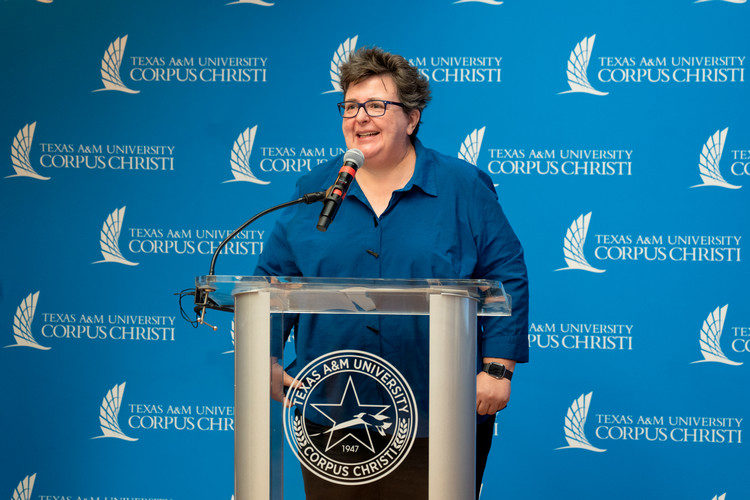Turning Trash to Treasure: Island University Professor Creates Recycled Art
CORPUS CHRISTI, Texas – Reduce. Reuse. Recycle. Responsibility. These four words serve as a life motto for Dr. Lon Seiger, Kinesiology Professor at Texas A&M University-Corpus Christi. Many of these values stem from childhood walks with his mother along the shores of Waikiki, Hawaii, to collect sea glass, which she used to create mosaics. It was these fond memories that inspired Seiger to conduct a study on the invasiveness of sea glass in Corpus Christi Bay and recycle the glass to create art. Sea glass, which predominantly comes from discarded bottles and jars that find their way into the water, becomes frosty and smooth after decades of being tumbled by waves.
“I’m honoring my mom through creative expression I inherited from her. However, this is so much bigger than me,” said Seiger. “It’s about responsibility, leaving only our memories and footprints in the sand, and doing our part to clean up the world around us.”
Using collected sea glass, Seiger has created more than 200 personalized multimedia art pieces and mosaics for his students and colleagues.
“I tell my students every day how great they are, but words are cheap,” said Seiger. “When you make an art piece by hand as a gift to each one of them, it’s a random act of kindness, it’s sharing a piece of ourselves with others.”
While other countries have studied sea debris in general, this is the first study to focus solely on sea glass in the United States. Seiger’s research spanned 60 days, including two 30-day periods one year apart when Seiger and his dog walked the beach to collect the scattered glass. In total, Seiger collected 41,145 pieces of sea glass collectively weighing 176 pounds.
“Studying sea glass is important because fish and mammals often mistake it for food,” Seiger said.
Along with collecting sea glass, Seiger also spent the last two years gathering driftwood washed ashore due to Hurricane Harvey. He repurposes the pieces to create structures and beautify his home. His “Harvey Wood” fortress includes fences, decorative walls, a walkway, pergola, and a screened-in picnic area. Seiger has created these items with no professional carpentry experience.
“Working with my hands is one way I practice mindfulness, become one with nature, and take time for mental recovery,” Seiger said. “It’s an escape from reality, which is something I talk about with the students in my health classes. I tell them, ‘we’ve got to put reality in its place, keep it in perspective.’”
Seiger hopes to publish his sea glass study in the Texas Association for Health, Physical Education, Recreation, and Dance Journal once it’s complete. He also plans to extend his sea glass study to a yearlong period and will present on the topic at the Texas Association for Health, Physical Education, Recreation, and Dance Summer Conference in July.
“I hope my study inspires individuals to spend more time outdoors and make protecting our planet a priority,” said Seiger.
In addition to sea glass, Seiger is also researching the impact of drum circles in a study called “Using Group Empowerment Drumming to Lower Anxiety in Freshman Student-Athletes.”
“College freshmen are responsible for a multitude of things like creating a class schedule, dealing with relationships, time management, and finances,” said Seiger, “but being a student-athlete adds a whole new layer of stressors including additional time commitments for practices, games, and travel.”
During his 25 years at Texas A&M-Corpus Christi teaching health education and outdoor adventure courses, Seiger has written many books on topics such as wellness strategies, walking, belly laughs, and the use of adventure and creativity in teaching.
“I know its cheesy, but I want to be known as a weird professor,” Seiger shared. “I want to have a different level of impact, not just on my students’ brains, but on their hearts and souls. That’s a legacy.”





































